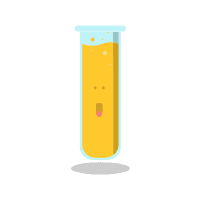
NCSCOS Grade 8 Science - Topic: 8.E.1 Earth Systems, Structures and Processes
Quiz by NCDPI
Grade 8
Science
North Carolina Standard Course of Study
Feel free to use or edit a copy
includes Teacher and Student dashboards
Measures 4 skills from
Measures 4 skills from
With a free account, teachers can
- edit the questions
- save a copy for later
- start a class game
- automatically assign follow-up activities based on students’ scores
- assign as homework
- share a link with colleagues
- print as a bubble sheet
8 questions
Show answers
- Q1Which will MOST LIKELY result if there is increased upwelling in a coastal area?fewer nitrateshigher water temperaturesmore aquatic lifless nutrients in the water60s8.E1.2
- Q2Which BEST determines the health of a lake used as a source of freshwater?its temperature and pHits temperature and depthits depth and widthits location and depth60s8.E1.3
- Q3Why is water from an aquifer more likely to be cleaner than water from other sources?because it rises to the surface near the oceanbecause it forms where fresh and salt water meetbecause pollutants are filtered by rock and soil deep within Earthbecause it receives water directly from precipitation60s8.E1.1
- Q4In which oceanic zone do clams and crabs survive by burrowing in the sand?intertidaldeep oceanopen oceanoceanic60s8.E1.2
- Q5If a body of water has high turbidity levels, what can MOST LIKELY be concluded?It is too hot to drink.It contains a lot of chemicals.It is unsafe to drink.It has a low pH.60s8.E1.3
- Q6Which BEST describes the characteristics of a river basin?the land drained by a river and its tributariesthe land formed when rivers create estuaries and marshesthe land formed as a result of a river floodingthe land at the mouth of a river where water flows into the ocean60s8.E1.1
- Q7Which factors can have the GREATEST effect on the health of a river system?natural disasters and tidal changestype of soil and salinitynitrate levels and turbidityhuman consumption and pH60s8.E1.3
- Q8In the United States, which is responsible for ensuring the safety of the country's drinking water?Environmental Protection Agency (EPA)Center for Disease Control (CDC)Food and Drug Administration (FDA)National Oceanic and Atmospheric Administration (NOAA)60s8.E1.4